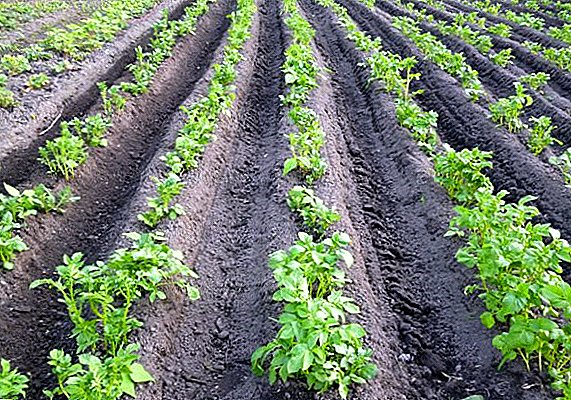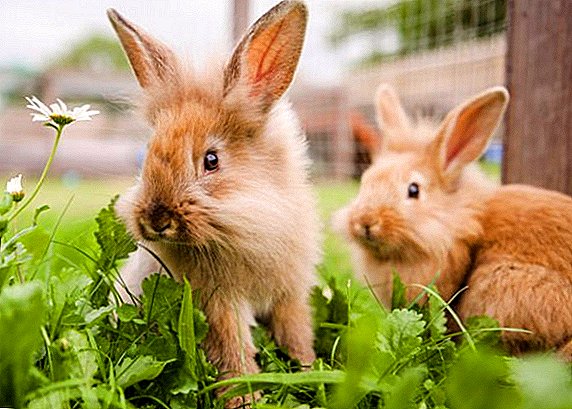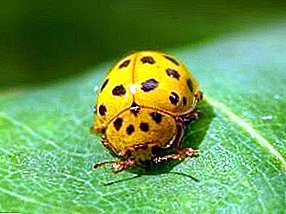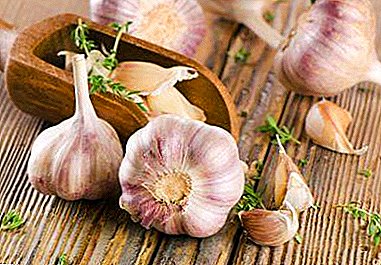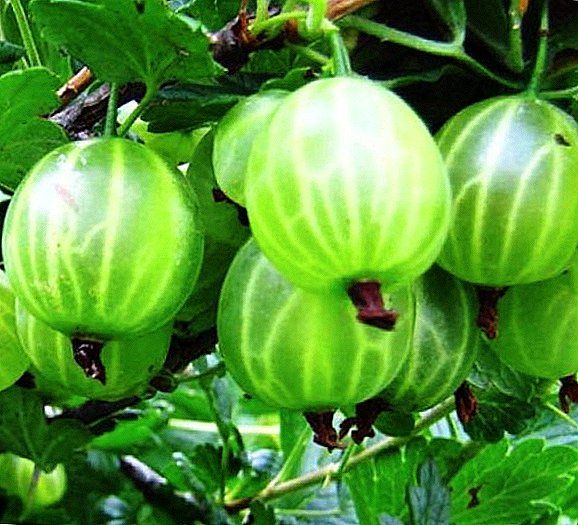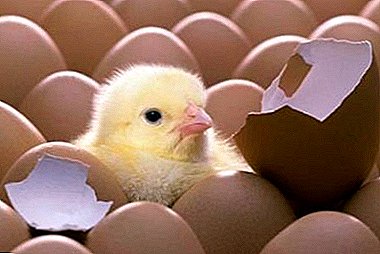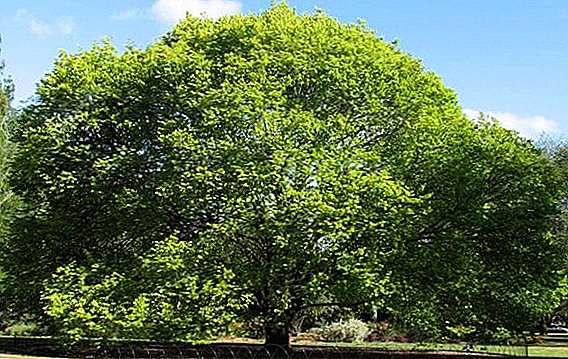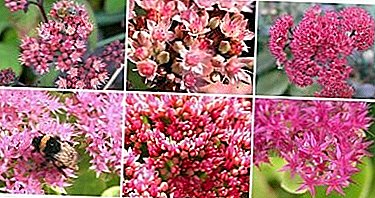
Sedum purple (Sedum telephium L.) has a few more official names - creak, hare cabbage, Sedum, telefium.
In the people stonecrop known as hernia or feverish grass. Translated from Latin it means "to subside", "to sit".
In our article, the view is one of the species of stonecrop - Purple, as well as proper care, planting, plant properties and photos.
Since ancient times it is the plant was used as an anesthetic. And the second value received from the nature of growth, he is pressed to the ground.
Is counted about 500 species of sedum. They are very different from each other in appearance. Distributed plant throughout Russia, is found in the western countries of Europe, Asia Minor, North America, as well as in Mexico.
A temperate climate is suitable for good growth.. Sedum is quite simple to grow in the garden.
Description
Sedum is a perennial plant. It has a short rhizome with a thickened root. Blossom begins with the second year.
Leaves
 Sedum purple belongs to the family of Crassulaceae, to succulents. Therefore, it has the characteristic features of succulents.
Sedum purple belongs to the family of Crassulaceae, to succulents. Therefore, it has the characteristic features of succulents.
Him fleshy leaves with a rich green to purple color. Oval-shaped leaves reach a length of 12 cm. Smooth to the touch, covered with a waxy coating that does not allow moisture to evaporate.
Little leaves notchedIt tastes a little sourish. They can be used in the preparation of salads, soups.
It is eaten both raw and sour. In the heat of the juice of the leaves quenches thirst and restores strength.
The leaves are rich in vitamin C and organic acids.Juice acts as a tonic, restorative, wound-healing and anti-inflammatory effect.
Stem
Skripun has one or two thick stalks.. On it are densely leaflets.
The stem is straight, in some species it is bent at the base, branches in the inflorescence. It grows from 15 to 90 cm.
The stem has a dark green or deep purple color.
Flowers
 Telefium inflorescences dense corymbose apical, sometimes lateral. In diameter, the inflorescence is about 6-11 cm.
Telefium inflorescences dense corymbose apical, sometimes lateral. In diameter, the inflorescence is about 6-11 cm.
Flowers bloom on short pedicel.
The green color of the cup consists of 5 pointed sepals. The corolla is mostly purple, lilac or pink.
It consists of 5 elongated petals, reaching 7 mm. Stamens are from 5 to 10 pieces.
The period of flowering sedum - from July to September. It is pollinated by insects. It is a good honey plant. Fruits ripen in August-September.
Five fruits appear on the site of each flower. They are red, pink or greenish, reaching a length of 5-6 mm. Seeds ripen oblong, about 0.5 mm, brown tint.
A photo
Useful and beautiful stonecrop purple:


Care
Clean in the care is absolutely unpretentious and does not cause inconvenience.It is a godsend for amateur gardeners.
One of its advantages is frost resistance.. And it also quite easily tolerates the lack of moisture and grows in open areas, is not afraid of direct rays of the sun.
Therefore, he will feel comfortable both in the garden and on the balcony.
From poppy seed planted in purple You can create on the balcony or loggia compositions, decorate them with alpine slides, use as a border.
Landing
 After purchasing a seedling of a hare cabbage or an adult plant, it must be transplanted into a new ground..
After purchasing a seedling of a hare cabbage or an adult plant, it must be transplanted into a new ground..
The stores use peat mixture, which is not suitable for the constant growth of the hare cabbage.
It is best to plant in the soil in late spring or early autumn in the event that the flower is on the balcony all year round.
The apartment is most suitable for planting or transplanting spring months.
Priming
Bunny cabbage can grow in any soil. The soil should be loose and well pass oxygen and moisture.
When self-cultivating the land mixture, take in equal proportions turf and leaf land. In this mixture, add half of the river sand and mix well.
In order for oxygen to reach the root system, regularly soil the soil.
Top dressing
Under natural conditions, the crepeda grows under various conditions.. Often the land in places of growth is not rich in nutrients.
Therefore, at home or in the garden it is necessary to carefully fertilize the soil. Under the condition of good growth and abundant flowering, the creak does not necessarily have to be fed.
Ash serves as a fertilizer., which should be mixed into the land mix for planting. Excess mineral fertilizers adversely affect plants that overwinter on the balcony. In this case, the frost resistance of the stonecrop decreases and it can die.
When growing hare cabbage on the windowsill, fertilizers are used for succulents. The dosage specified in the instructions, cut in half.
Watering
 Sedum purple is very fond of moderate watering.
Sedum purple is very fond of moderate watering.
The plant calmly tolerates drought.like all succulents.
An excess of moisture leads to decay of the root system of the purple stonecrop and defeat by rot.
The soil before watering should be well dried.
During the winter months, watering should be done no more than 1 time in 10-14 days.
Bloom
Sedum purple blooms in July. Flowering lasts about 2-3 months. Flowers bloom small, purple.
The flowers of feverish grass are very fragrant.. They have a special spicy flavor and are honey. All summer, even in the hottest weather, they attract bees with nectar.
Period of life
Telefium is a perennial plant. Shoots live 2 years. In the first year on the escape the foliage develops. Already in the second year, it blooms and produces seeds.
Lighting
Feverish grass is very photophilous. Therefore, it can be placed on the windowsill without fear of burns. It also grows well in the summer months on the open balcony.
In the winter months, flower placement on the south windows is most favorable.
With a lack of light, feverish grass loses its color not only in flowers, but also in leaves. Also shoots are drawn and lose their attractiveness.
Air humidity
Hernia grass is very unpretentious. She does not need additional hydration. Spraying under room conditions can be carried out only for hygiene purposes, to remove lodged dust.
Thermal mode
 Rabbit cabbage grows throughout Russia and is adapted to a volatile climate. She tolerates summer heat and winter cold.
Rabbit cabbage grows throughout Russia and is adapted to a volatile climate. She tolerates summer heat and winter cold.
In room conditions hare cabbage feels comfortable at a temperature of 22-32 degrees in the spring and summer months.
In winter, ensure the temperature is not higher than 15 degrees. If in winter to maintain a high temperature, the telephium loses its decorative appearance.
When wintering plants on the balcony or loggia, it is necessary to provide additional shelter.
Breeding
Most the simplest breeding method is dividing a bush. To do this, in late spring, dig it up and gently, with your hands, divide the root system.
Already separated roots, before planting, process wood ash to prevent rotting and infection of fungal diseases. This procedure is carried out no more than 1 time in 3 years.
Cuttings are also fairly easy to propagate.. To do this, in the summer months to prune an adult plant. Cut the cuttings left in a container of water until the roots. After that, plant in the pot.
 Also, cuttings can be rooted in the wet sand. To do this, pour sand into the tank, install the cuttings vertically and water regularly.
Also, cuttings can be rooted in the wet sand. To do this, pour sand into the tank, install the cuttings vertically and water regularly.
Sand should always be wet. After 10-14 days, the roots will appear. After this, the cuttings are transplanted into the prepared earth mixture.
Another method of reproduction - seeds. They are sown in the seedling box. Watering should be done carefully, so that the seeds are not washed from the soil, and regularly.
After the emergence of seedlings, with 2-3 leaves, planted in separate pots. The flowering of such a plant will be possible only in 2-3 years.
Diseases and pests
Telefium is rarely affected by diseases or pests.
Diseases and pests
The most common disease occurs root rot. The cause of this disease is waterlogging. The leaves with this disease turn yellow, wither and fall off over time.
To get rid of the root rot in the first place you need to dig telefium. Then all affected areas of the root system are removed.
 For disinfection, the root is washed with a weak solution of potassium permanganate and treated with wood ash. Plant a flower only in a new pot with fresh soil.
For disinfection, the root is washed with a weak solution of potassium permanganate and treated with wood ash. Plant a flower only in a new pot with fresh soil.
Very rarely a flower is affected. spider mite or aphids. When pests appear, the plant gradually fades, the leaves turn yellow and fall off.
To get rid of pests, it is treated with soap or soap-alcohol solution. With a heavy lesion will help treatment with chemicals.
If you find a pot on the balcony, the squeak can be hit by slugs. They need to be removed and the whole plant treated with chemicals. Put sand or wood ash on the ground with a layer of 1-2 cm.
Medicinal properties
Medicinal properties and contraindications of a stonecrop purple.
Feverish grass (purple sedum) is known for its medicinal properties.. The juice contains organic and amino acids, as well as carbohydrates and polysaccharides. Also present in the composition of ascorbic acid, kakhetin, carotenoids, macro and microelements.
Application
Purple Cill Juice is a hemostatic and wound healing remedy.. Due to its chemical composition, the juice improves metabolic processes, which leads to the regeneration of damaged tissues. The flesh of the leaves can have an anti-inflammatory effect.
Juice and pulp of fever grass is used to treat difficult-to-heal wounds, injuries, as well as chronic inflammation of the sinuses. Positive results are observed in the treatment of periodontal disease.
 Quite often, creak, in the form of an alcohol tincture, is used in the treatment and for the prevention of the formation of a malignant tumor.
Quite often, creak, in the form of an alcohol tincture, is used in the treatment and for the prevention of the formation of a malignant tumor.
The leaves help in the treatment of burns and hemorrhoids.
With the help of stonecrop improves immunity, supported by the work of the cardiovascular system. It also improves the work of all internal organs.
It is also used in gynecological diseases (fibroids, cyst, infertility). In men, used in the treatment of prostatitis, also has properties that increase potency.
Most of the ways are popular.
Self-treatment can lead to complications. Therefore, before use or use as a medicine, it is necessary to consult a doctor.
Contraindications
People suffering from hypotension, the use of stonecrop for medicinal purposes is contraindicated.
Having planted in your garden, on the balcony or in the apartment of the purple stonecrops you will get not only decoration. Juice and pulp of leaves, due to its properties, can be used for therapeutic and prophylactic purposes.


